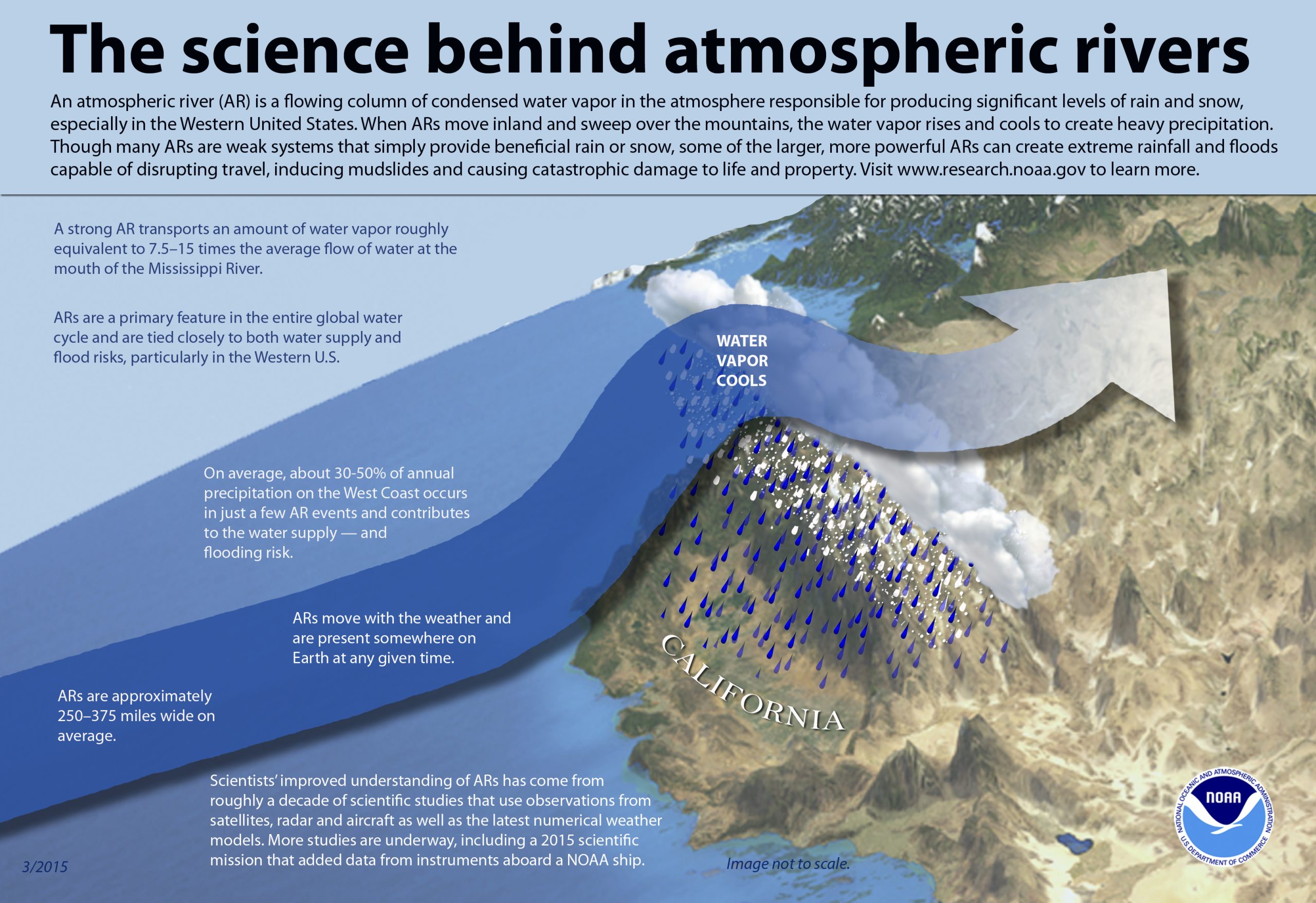What is an Atmospheric River?
Atmospheric rivers are long, narrow regions in the atmosphere that transport most of the water vapor outside of the tropics. These “rivers in the sky” can vary greatly in size and strength, but on average, they carry an amount of water vapor roughly equivalent to the average flow of water at the mouth of the Mississippi River. Exceptionally strong atmospheric rivers can transport up to 15 times that amount.
When atmospheric rivers make landfall, they often release this water vapor in the form of rain or snow. While they can create extreme rainfall and floods, often by stalling over watersheds vulnerable to flooding, most are weak systems that often provide beneficial rain or snow crucial to the water supply.
Why Are They More Common Now?
The increasing prevalence of atmospheric rivers is linked to climate change. Greenhouse gases trap heat in the atmosphere, warming the planet. This causes more water to evaporate from oceans and lakes, and increased moisture in the air makes storm systems grow stronger. In a warmer world, the atmosphere above the ocean contains more water vapor, and atmospheric rivers now transport greater amounts of water vapor than they used to.
With climate change knocking at our door and air and ocean temperatures rising, atmospheric rivers will only keep intensifying in strength, frequency, and length. Some studies suggest that rainfall will increase by up to 40% more in a warming world.
The Impact of Atmospheric Rivers
Atmospheric rivers are a key feature in the global water cycle and are closely tied to both water supply and flood risks — particularly in the western United States. They contribute to beneficial increases in snowpack but are also responsible for great quantities of rain that can produce flooding.
In future decades, as greenhouse gas increases are expected to continue to outpace aerosols, there will be intensification of atmospheric river-induced precipitation. The regions most impacted by such an increase are mid-latitude, continental coastal areas of North America, South America, South Africa, and Europe, as well as polar regions.
While atmospheric rivers can cause damaging floods and debris flows, wreaking havoc on local economies, they also play a crucial role in replenishing water supplies and quenching dangerous wildfires.
While atmospheric rivers pose certain risks due to their potential for causing extreme weather events, they also play a vital role in our global climate system. As our climate continues to change, understanding these “rivers in the sky” becomes increasingly important.





